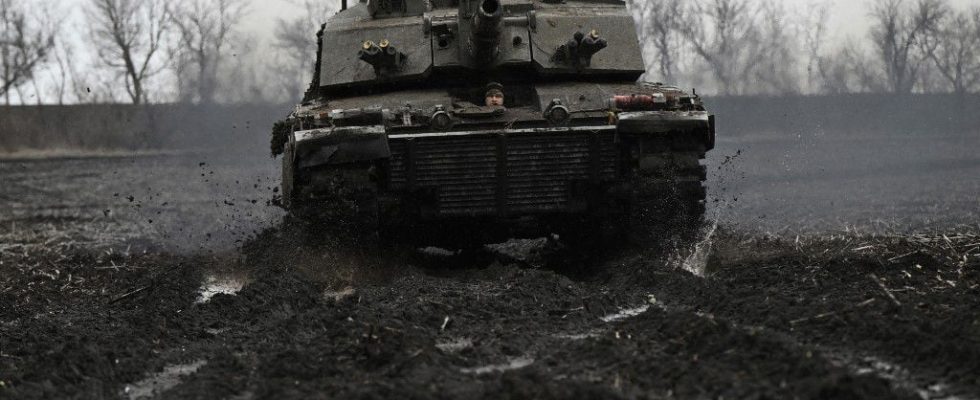A month after taking the town of Avdiivka, in eastern Ukraine, Russian forces tirelessly continue their nibbling work. Some five kilometers further west, on March 19 they claimed the conquest of the village of Orlivka – less than 1,000 souls – where the Ukrainians had withdrawn part of their resources during their retreat.
Faced with a shortage of ammunition for months, kyiv’s forces appear increasingly in difficulty on the front. At issue: the blocking in Washington of new aid of 60 billion dollars, against a backdrop of pitched battle between Republicans and Democrats. “It is of critical importance for us that the Congress quickly completes all the necessary procedures and makes a final decision,” Volodymyr Zelensky said recently.
On the ground, the cut in the American tap is painfully felt. The fire ratio – which compares the volume of artillery fire carried out by each of the two parties – would today be 1 to 10 in favor of the Russians, according to military experts. “Even if the Ukrainians have better quality cannons, it is disabling to only be able to fire one shell when your adversary sends 10,” insists Camille Grand, former deputy secretary general of NATO, now a researcher at the group of reflection European Council for International Relations. This imbalance can lead to situations that are difficult to maintain locally.”
The Ukrainian armed forces recognize this. After observing “progressively more difficult” clashes, the commander-in-chief, Oleksandr Syrsky, himself warned, in mid-March, of the “threat of seeing enemy units sinking deep into (his) combat formations” .
Weakening of the front
Enough to fuel the growing fear of a Russian breakthrough. “Ukrainian shortages of ammunition and other war materials resulting from delays in the provision of U.S. military assistance could make the current Ukrainian front line more fragile,” notes in a recent report the Institute for the Study of War. Ultimately, this could create “vulnerabilities that Russian forces could exploit to make sudden and unexpected advances if Ukrainian supplies continue to decline,” continues this Washington-based think tank.
Well aware of the risks involved, the head of Ukrainian diplomacy, Dmytro Kouleba, said he was “shocked” on March 19 at the lack of progress in the American Congress despite months of negotiations. Especially since at the same time, delays are also accumulating on the Old Continent. Of the million shells promised by the Europeans by the end of March, deliveries should only reach 500,000 units, Brussels said the same day. On the other hand, North Korea would have supplied Moscow with more than 6,700 containers of ammunition containing “several million shells”, South Korea said at the end of February.
Between American procrastination and the time needed for the European defense industry to gain strength, the bottom of the wave is being felt for the Ukrainian army. “By the time Western aid starts to rise again, Russian forces have a window of opportunity,” says General Nicolas Richoux, former commander of the 7th Armored Brigade. “They will probably seek to take advantage of it during the spring or summer to try to obtain additional earnings.”
Fortification of the defense line
In Western chancelleries, concern has increased a notch. “Things are changing, changing quickly, and not in a good way,” summarized Emmanuel Macron in his interview on Thursday March 14, a few days after raising the hypothesis of sending ground troops, to general amazement.
Traveling to Germany five days later, the American Secretary of Defense, Lloyd Austin, promised for his part that the United States would not let Ukraine “fail”, saying he was “optimistic” about the hypothesis of a quick green light from the US Congress. In the meantime, Ukraine is strengthening its defense line. On March 11, the Ukrainian president announced “2,000 kilometers of work to strengthen existing fortifications and create new ones.” The day before, a note British intelligence had notably mentioned the establishment of “dragon’s teeth” (concrete cones supposed to slow down the progress of armored vehicles), “anti-tank ditches”, “trenches” and “minefields”.
Will this be enough to contain the Russian advance in the event of a major offensive? “If the ammunition problem is not resolved, we cannot exclude Russian gains, or even localized ruptures of the Ukrainian front, assesses Camille Grand. However, it would be surprising to witness a collapse of the Ukrainian army and to Russian gains of strategic magnitude: the Russian army has been largely decimated and has, until now, not demonstrated exceptional offensive capabilities…” At the beginning of March, the British Ministry of Defense assessed the losses Russians to 355,000 killed and wounded since the start of the conflict.
.
